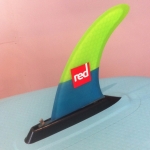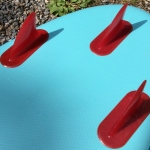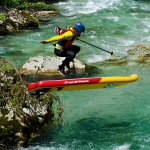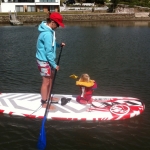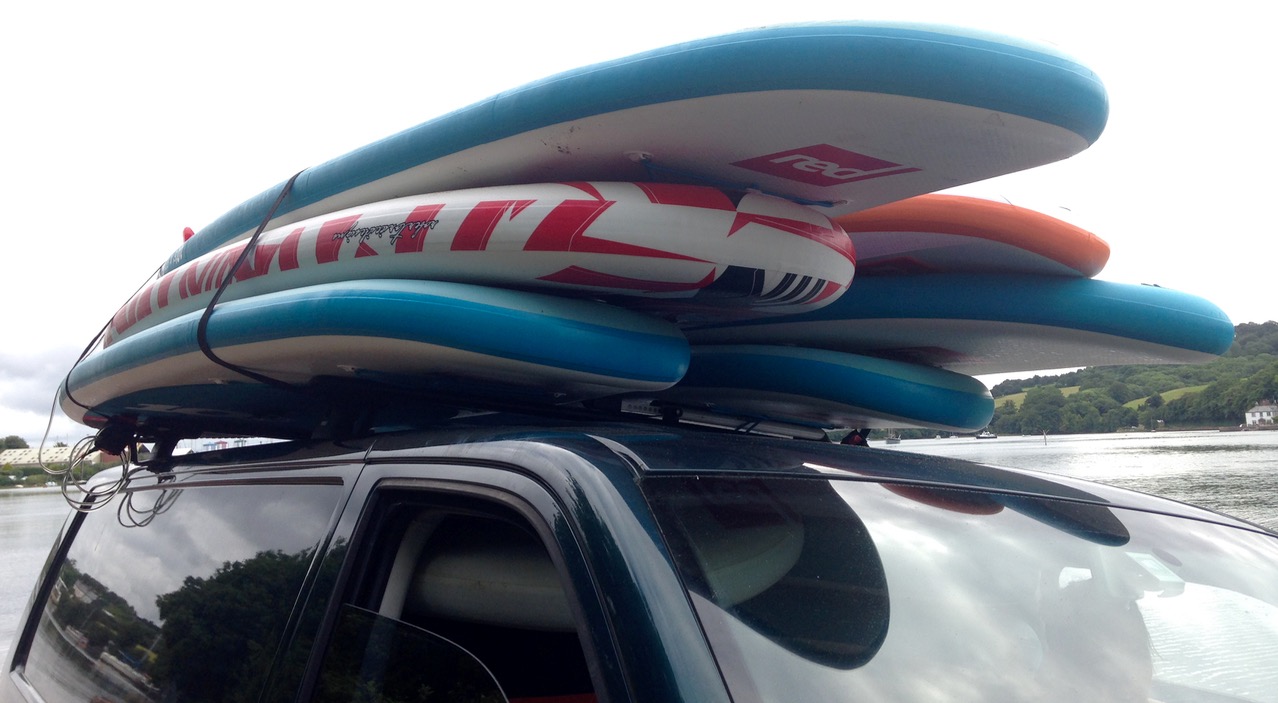
Inflatable SUPs or iSUPs as they’re commonly called are becoming increasingly popular with paddlers around the world due to their practicality and robustness. But with so many iSUPs now available on the market how do you know which are any good and which is a good deal? Whether it’s new or used SUPboarder offers some top tips when buying an inflatable paddleboard to help you make that right decision…
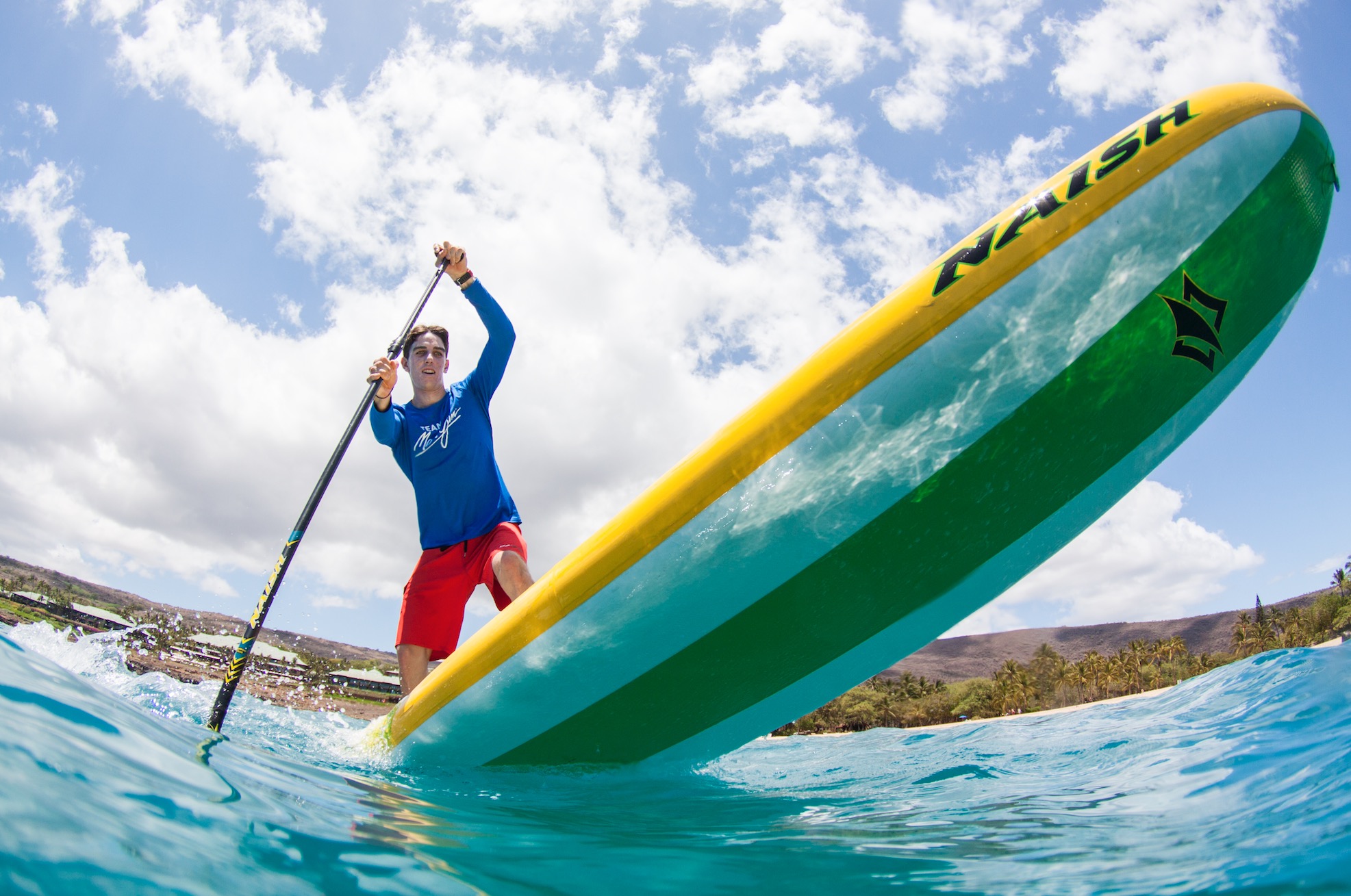
Do your research
Don’t just buy the first board you see. Do your research and buy from a well respected brand that you’ve heard about and trust. As iSUPs become more popular, more brands are appearing on the market every day. But just because they make iSUPs doesn’t necessarily mean they make good iSUPs! We see all types of kit at SUPboarder and some iSUPs you wouldn’t dare stand on, on dry land let alone on the water! (and we don’t even bother reviewing these boards!) So talk to other paddlers to hear their opinions, check out the SUPboarder board reviews and chat to the guys at your local shop/school.
Try before you buy
This is the best way to not only see what the board really looks like but also how it performs. A good quality iSUP should not look like a banana or get your feet wet when you stand on it! It should feel pretty rigid and if the correct size easy to paddle.
Don’t just buy it because it’s cheap!
Prices of iSUPs vary hugely. And there is normally a good reason for this! Cheaper iSUPs are often made from cheaper materials, and as a result are less robust, less rigid and often impossible to get spare parts for. Don’t be surprised if they look like a banana and feel awful to paddle too! So don’t waste your money on a cheap board you’ve never seen or heard of before. But by doing some research you may discover some cheaper brands that do make good iSUPs for their price, but they may have a less quality bag etc…
Check out the pump
iSUP pumps come in all shapes and sizes and can vary massively in their pumping efficiency. Single cylinder, 2 cylinder, one way, dual action etc… The best way to find out if it’s any good is to give it a go. So it’s well worth looking at the pump as well as the board before you part with any cash. There’s no point having an iSUP if you can’t pump it up. If you’re unsure of the best way to use an iSUP pump then check out the feature ‘Pumping up an iSUP’. Or to find out which pumps SUPboarder think are the best on the market check out ‘The SUP pump guide & test’.
Check out the backpack
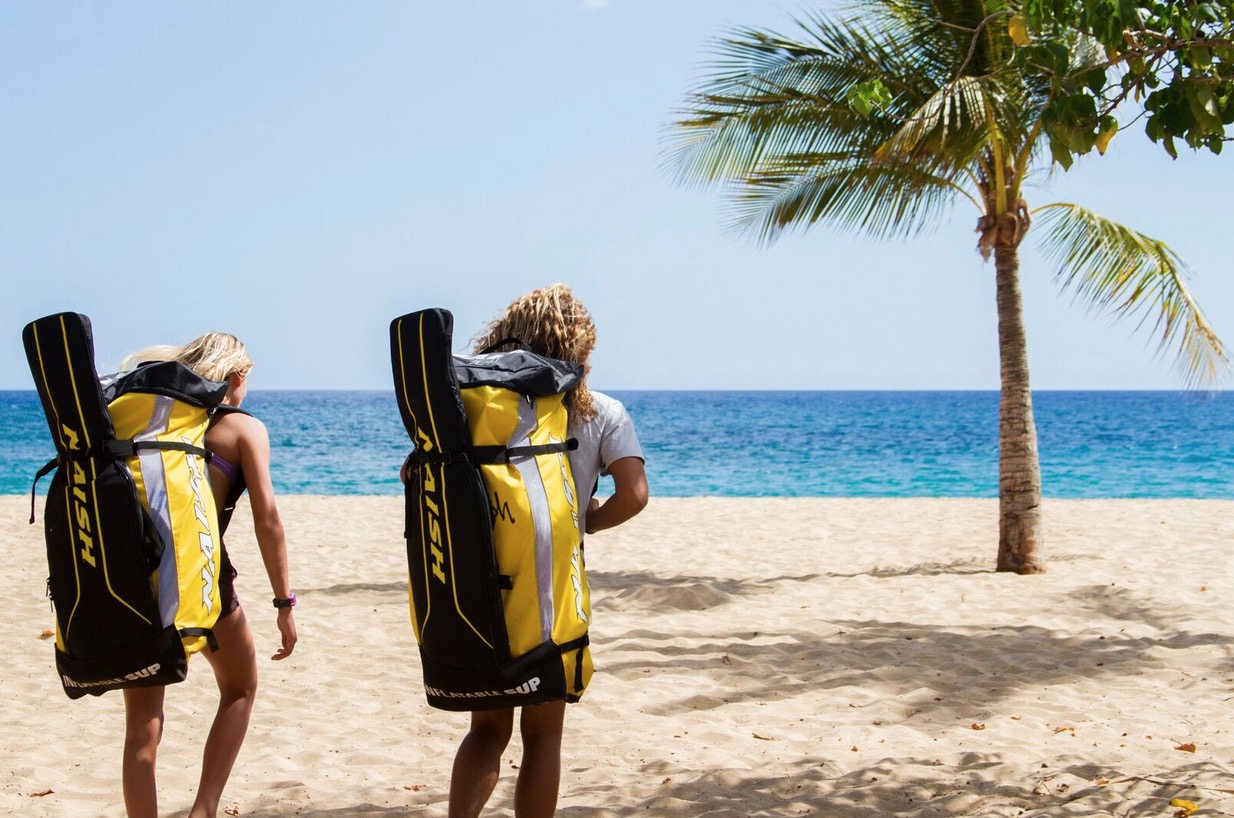
The great benefit of iSUPs is that you really can take them anywhere. Well… thats if the backpack is any good! So check that the bag the board comes with is up to the job. Most brands have now done away with the simple stuff sack style bag with flimsy straps, and designed comfy, padded backpacks, some with separate compartments for your SUP paddle and accessories. Having a decent lockable bag is also useful if you’re wanting to travel with your SUP and put it on a plane etc…
As the saying goes,
“Don’t judge a book by its cover’ but ‘You can often judge an iSUP by its bag!’
Check out the fins
Decent fins on an iSUP really make a good iSUP stand out from a poor iSUP. iSUPs generally have 2 types of fins. Those that are permanently attached to the board that are more robust, and those that have to be attached with a screw or clip and are a bit more fragile. Some boards have a combination of the two. If you’re looking at buying a board with removable fins make sure the fin system is robust and going to withstand the occasional knock and you regularly taking them in and out. We have seen some shocking fin systems on iSUPs where you’d be lucky if your fins even make it to the waters edge! The well known US box fin is always a very safe bet, as it is not only robust but will also fit many different fin shapes and are easily available all around the world. Hopefully you won’t break one but it’s always good to know you can get a spare.
Consider what you want to use your board for
iSUPs are now available in all shapes and sizes, weights and thicknesses. Some are designed for all round use, and others have been designed for a specific discipline such as surf, race, white water etc… So thinking about what you plan to do with your iSUP will help you determine which will suit you best. 10’5 is the most popular all round sized board. The longer the board the faster the board so better suited for racing and touring. The shorter the board the easier it is to manouever so therefore more suited to the surf. Also remember the narrower the board the more unstable it will be so consider both length/width as well as what you plan to do with your board, and your paddling ability when deciding which board to buy.
Feel the weight
iSUPs not only vary in weight due to their size, but also due to the materials and construction methods used. A 10’5 iSUP could weigh anything from 9kg to 15kg. It might not sound much but you’ll definitely feel the difference in your arms when carrying it down the beach. So if you’re looking for an easy board to carry and chuck on the roof of your car, a light board to take on your travels abroad then make sure you consider the boards weight. However it’s also worth noting that the reason boards are heavier is because 99% of the time they are made from more material which will have the benefit of generally being harder wearing. So if you’re looking for an iSUP to take in the WW then a heavier more sturdy iSUP may be a better choice.
Check the warranty
You should expect to get at least a 1 year warranty when buying a new iSUP. Hopefully you won’t need it but it’s good to know you have it. Its also worth finding out who’s best to contact if you have any queries or concerns. Bare this in mind when you buy a super cheap iSUP online. Chances are it will have no warranty or customer services dept!
Check for any imperfections
Due to the complex manufacturing process of iSUPs a number of imperfections can arise and these are worth being aware of. These may include board twists, reverse rocker lines (nose/tail bending the wrong way!), leaking seams and bubbles between the pvc layers. These imperfections are more frequently seen on cheaper iSUPs due to the poorer quality control standards. If your new board does not look perfect, do not accept it. A board with a twist in it will have less glide and poorer performance.
To find out more about iSUPs including how they’re made, board pressures and the pros and cons of iSUPs check out the article ‘Everything you need to know about iSUPs.’
Hopefully you found this article useful and you now feel more prepared to go shopping!
Featured image : John Carter

